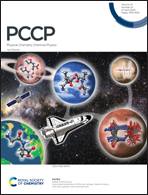Semiconducting few-layer PdSe2 and Pd2Se3: native point defects and contacts with native metallic Pd17Se15
Abstract
PdSe2 is a unique layered two-dimensional (2D) material with pentagonal structural motif and anisotropic properties. In addition, its strong interlayer interaction leads to new 2D form of the exfoliated monolayer, that is, Pd2Se3. Despite the increasing interest in these emerging 2D materials, the landscape of the native point defects, as a fundamental materials property, has not been revealed. In this work, we systematically investigate different types of defects in mono- and bi-layer PdSe2 and monolayer Pd2Se3. In contrast to the common expectation, Se vacancy is not the readily formed defect. Instead, Se-excess defects, such as SePd antisite and Se interstitial, are more likely to form over a majority of the allowed range of the atomic chemical potentials. Se-deficiency defect, Pd interstitial, is able to form under the Se-poor condition in bilayer PdSe2. The defect-mediated interlayer fusion model in the formation of monolayer Pd2Se3 from bilayer PdSe2 is reformulated. These dominant defects are found to stay in the neutral charge state, partly explaining the ambipolar behavior of the PdSe2 transistors. Finally, the stacked and lateral contacts between these few-layer semiconductors and the native Pd17Se15 metal are also studied. All these interfaces show p-type contact properties. This work reveals the important materials properties of few-layer PdSe2 and Pd2Se3 for the better development of new functional devices.



 Please wait while we load your content...
Please wait while we load your content...